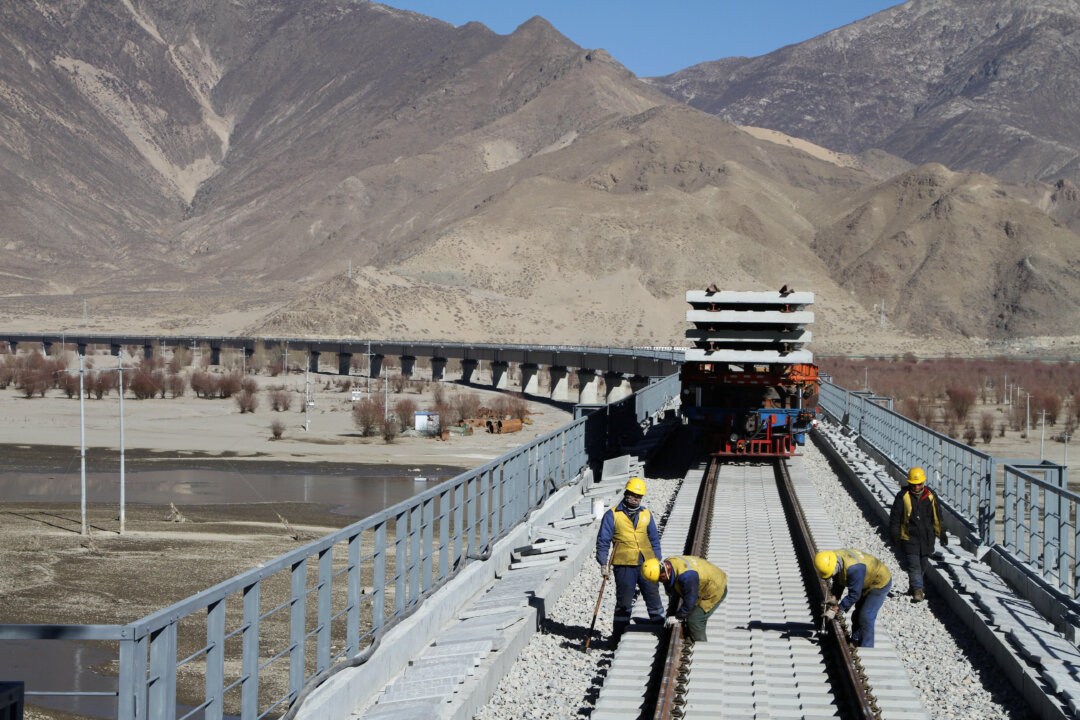Beijing said the dam won’t have a major impact. India and Bangladesh, both situated downstream, are concerned over the project.
India has raised concerns with the Chinese regime over its plan to build a hydropower dam in Tibet, India’s foreign ministry said on Friday.
According to Chinese state news agency Xinhua, the recently approved dam will be built on the lower reaches of the Yarlung Zangbo River, which becomes the Brahmaputra River as it leaves Tibet and flows south into India’s Arunachal Pradesh and Assam states and finally into Bangladesh.
Chinese officials say that hydropower projects in Tibet will not have a major impact on the environment or on downstream water supplies. India and Bangladesh have nevertheless raised concerns about the dam.
Randhir Jaiswal, spokesperson for India’s Ministry of External Affairs, told reporters New Delhi will monitor the development.
“As a lower riparian state with established user rights to the waters of the river, we have consistently expressed through expert level as well as diplomatic channels, our views and concerns to the Chinese side over mega projects on rivers in their territory,” he said.
Jaiswal said Beijing has been urged to ensure the interests of downstream states of the river are not harmed.
“We will continue to monitor and take necessary measures to protect our interests,” he said.
Xinhua reported on Dec. 25 that the authorities had green-lit the plan to build a dam on the Yarlung Zangbo River.
According to an estimate provided by the Power Construction Corp of China in 2020, the dam could produce 300 billion kilowatt-hours of electricity annually, more than triple the 88.2 billion kWh designed capacity of the Three Gorges Dam, currently the world’s largest, in central China.
Pema Khandu, chief minister of Arunachal Pradesh, raised concerns that China’s plan to divert water could drastically lower the water level of the river, which is known as the Siang River in the province.
“In such a scenario, the volume of water could decrease so much that one might be able to cross the mighty river on foot,” he said in an interview with Indian news agency PTI.
While the Chinese regime has not disclosed the exact location of the dam, the area sits on top of the Alpine-Himalayan seismic zone.
After the project was approved last week, Hung Ming-Te, assistant research fellow at Taiwan’s Institute for National Defense and Security Research, told The Epoch Times that because the Yarlung Zangbo River is in a seismic zone, the dam could significantly increase the risks of landslides.
Germany-based Chinese hydrologist Wang Weiluo told The Epoch Times there’s no need to build another dam, because China’s electricity supply is already larger than its demand.
In 2021, after the Chinese regime announced plans of a hydropower project on the the Yarlung Zangbo, Wang wrote an article arguing that a dam would bring irreparable damage to the protected Yarlung Zangbo Grand Canyon, which was already at risk of flooding from earthquakes and landslides.
In 2023, Indian geostrategist and columnist Brahma Chellaney, called the dam “the world’s riskiest project” and a “ticking water bomb for downstream communities in India and Bangladesh” in an op-ed published in Nikkei Asia.
Chellaney said that even without earthquakes, the mega dam itself will heighten the risks of monsoon-induced flash floods.During the same press conference on Friday, Jaiswal also said India has lodged “a solemn protest” over China’s creation of two new counties.
On Dec. 27, the authorities of Xinjiang announced the creation of the new counties, He’an and Hekang, in the Hotan prefecture.
Jaiswal told reporters that parts of the area “fall in India’s Union Territory of Ladakh.”
Luo Ya and Reuters contributed to this report.

